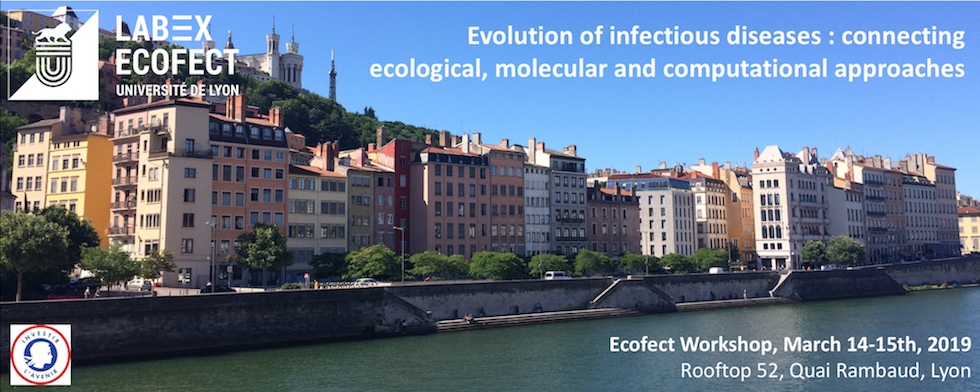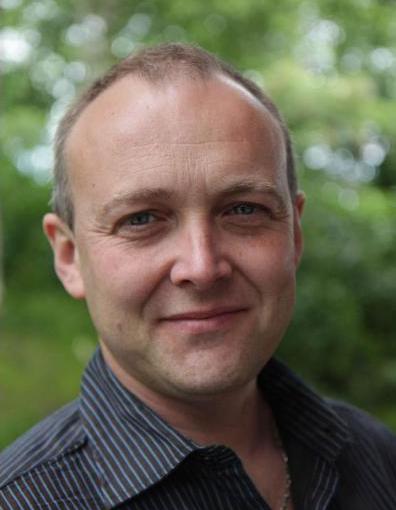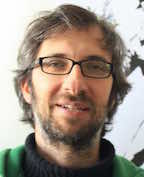
Orateurs invités
Dan Andersson Site web Department of Medical Biochemistry and Microbiology, Uppsala University, Sweden Research interests Our research addresses the mechanisms and dynamics of evolution in bacteria and how various factors such as the extent and type of genetic variation, strength of selection pressures, compensatory mutations and population dynamics affect the tempo and mode of adaptive evolution. Our research is focused on two different areas: A) analysis of the various genetic factors that affect genome stability and variability in bacteria and B) analysis of the factors that influence the dynamics of the evolution of antibiotic resistance development. We study these problems in several bacterial species using a combination of methods, including experimental evolution, bacterial genetics, molecular biology, biochemistry, whole-genome sequencing and mathematical modeling.
Susan Bailey Site web Experimental Evolution & Bioinformatics Lab, Clarkson University, Potsdam, New York, USA Research interests In the Bailey lab, we explore the processes driving evolutionary adaptation and diversification using a combination of microbial experimental evolution and mathematical/ statistical modeling approaches. At the moment, our research has two main themes:
Louis Lambrechts Site web Insect-virus interactions laboratory, Pasteur Institute, Paris Research interests Our lab investigates the ecology, evolution and genetics of insect-virus interactions to advance our basic understanding of arthropod-borne virus (arbovirus) transmission by mosquitoes. Why is there variation in the ability of mosquitoes to transmit human pathogens and what causes this variation? Our research addresses these questions using the tools of genomics, quantitative genetics, and evolutionary ecology. Our primary model is the transmission of dengue viruses by the mosquito Aedes aegypti. A major emphasis of the lab is to develop experimental approaches that account for the complexity of natural systems, where genetically diverse populations of mosquitoes interact with a wide variety of viruses, in a variable environment.
Penelope Anne Lynch Site web Department of Biosciences, University of Exeter, United Kingdom Research interests During my PhD I was fortunate enough to be able to model a novel concept in malaria control, the potential for insecticides targetting only older mosquitoes to provide good malaria control without generating strong selection for insecticide resistance. This involved modelling age-structured vector survival probabilities alongside the number of infectious bites expected per vector lifetime. This modelling then fed into a population genetics model which tracked and compared the spread of resistance, and consequent changes in infectious bites per unit of time, for vector populations subject to a range of conventional and late-life-acting interventions. I maintain my interest in this area, with my current research comprising the development and application of mathematical models which consider vector ecology and life history to explore the potential benefits of novel vector control methods. I am also still exploring ways to manage and even exploit the evolutionary effects of human interventions on vector populations.
Jean-Yves Madec Site web Unit “Antimicrobial Resistance and Virulence” , ANSES Lyon Research interests My research interests focus on molecular genetics and epidemiology of AMR in Gram negative and positive bacteria of animal origin (commensal, pathogenic, zoonotic) and issues regarding the animal-to-human transfer of AMR (and vice-versa). I am a member of several expert groups and committees on AMR and antibiotic use in animals and humans in France and Europe (including as the Vice-Chair of the Scientific Advisory Board of the Joint Programming Initiative on AMR) and an active participant/leader in recent European/transnational scientific projects. I am strongly implicated in international collaborative partnerships dealing with monitoring of AMR in animals and food thereof in different countries and continents (Algeria, Tunisia, Lebanon, and Brazil) and Head of the recently appointed (2017) FAO Reference Centre for AMR at Anses.
Eduardo Rocha Site web Microbial Evolutionar Genomics Unit, Pasteur Institute, Paris Research interests Scientific activities of the Microbial Evolutionary Genomics Unit are centered on the bioinformatics and biostatistics analysis of genomes, at the crossroads of molecular evolution, population genetics, molecular epidemiology, and molecular genetics. We also develop some translational aspects related with the study of the diversity of bacterial pathogens. We focus on four major questions:
Etienne Ruppé Site web Ecology, evolution and therapeutic of virulence and resistance in bacteria laboratory, IAME Institute, Inserm, Paris Research interests The purpose of our research is to achieve a better understanding of the ecological, evolutionary and molecular parameters allowing the adaptation of natural isolates of the E. coli species to their various lifestyles, especially those involved in the emergence of virulence and antimicrobial resistance and to develop new original therapeutic approaches to fight this pathogen. My work aims at spanning various aspects of antibiotic resistance: carriage, diagnosis, infections, emergence, epidemiology and prevention using culture and molecular-based methods.
Lotta-Riina Sundberg Site web Centre of Excellence in Biological Interactions, University of Jyväskylä, Finland Research interests On our studies we mainly use the fish pathogen Flavobacterium columnare and its viruses, phages, as a model system. We also work with other phage-bacterium systems originating from the aquatic environment to understand the diversity and evolutionary origins of bacterial viruses. Our core research themes are:
Olivier Tenaillon Site web Quantitative Evolutionary Microbiology Laboratory, IAME Institute, Inserm, Paris Research interests With the rise of antibiotic resistance and the emergence of new forms of virulence, it has become clear that microbial evolution is at the heart of infectious diseases. The aim of our team is to study the microbial adaptation with a quantitative methodology. For that purpose, we combine three approaches: experimental evolution, comparative genomics and population genetics. Experimental evolution combined with whole genome sequencing allow us to uncover the molecular bases of adaptation in test tubes as well as in mice colonization models. Comparative genomics allow us to study rates and tempo of adaptation in the wild at different time scale: species wise, for a sequence type or within a host as commensal or pathogen. Finally, integrated models of adaptation, such as Fisher Geometric Model of Adaptation, are used to capture the experimental and epidemiological observations.
Gael Yvert Site web Intra-species genetic variations laboratory, LBMC, Lyon Research interests Our research group is interested in the fundamental genetic mechanisms underlying inter-individual phenotypic differences. We wish to better understand why some individuals are more likely than others to develop specific traits. This question is at the heart of personalized medicine: using patients' DNA information will help predict the outcome of a specific treatment. For most cases of common health traits, personalized care is not ready yet because the contribution of DNA variation is very complex. For example, many carriers of a mutation predisposing to cancer will not necessarily declare the disease. We use very powerful experimental models, such as the yeast S. cerevisiae, and modern genomics and bioinformatics tools to address fundamental questions about the complexity by which genotypes control phenotypic variations. As an academic research lab, our aim is to make fundamental discoveries on this topic and diffuse openly our results, to increase current understanding on genetic predisposition to disease, and to transfer quantitative genetics methods to microbiologists.
|











